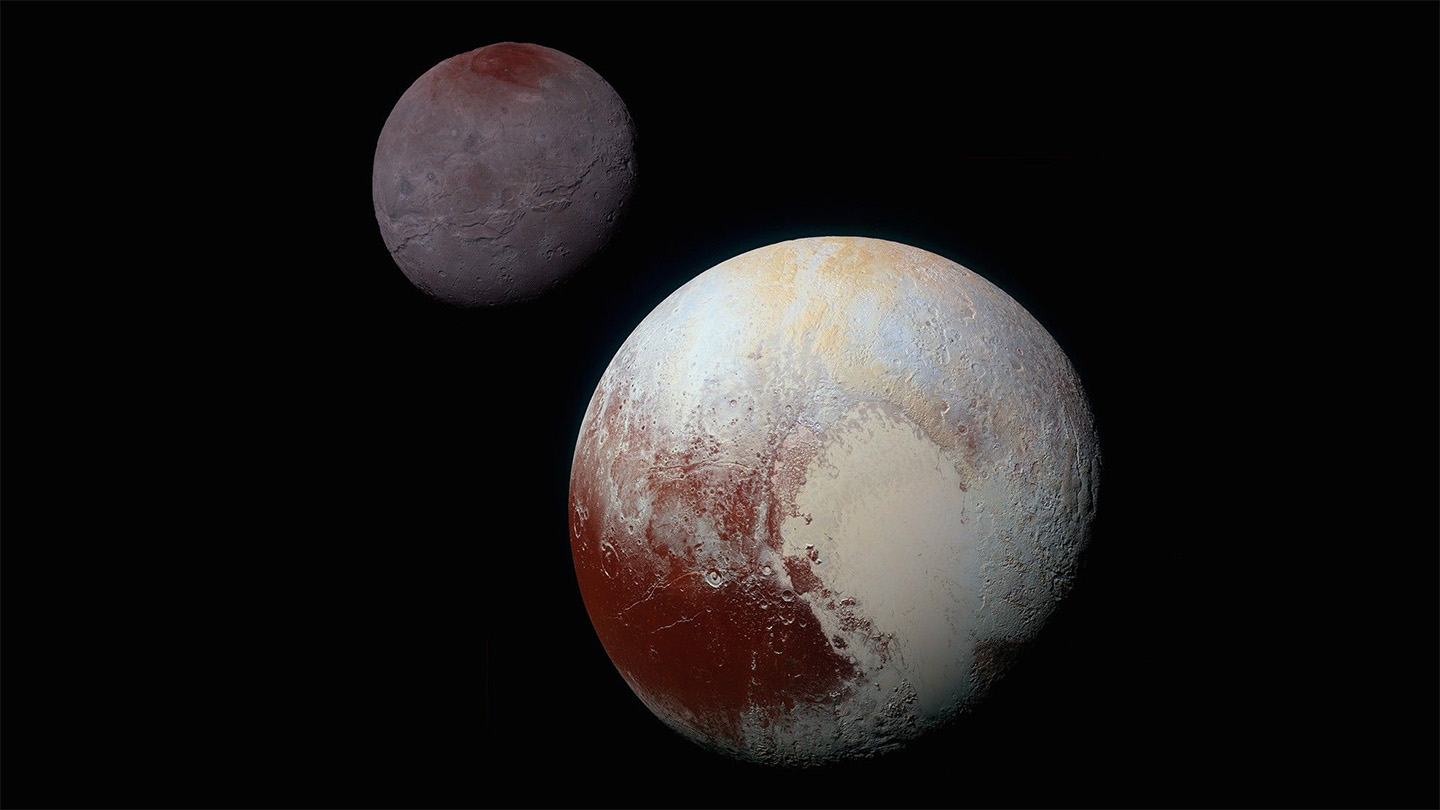Pluto may have captured its moon Charon with a kiss

Pluto and Charon’s meet-cute may have started with a kiss. New computer simulations of the dwarf planet and its largest moon suggest that the pair got together in a “kiss-and-capture” collision, where the two bodies briefly joined up before settling into their current positions.
“It’s a U-Haul situation,” says planetary scientist Adeene Denton of the Southwest Research Institute in Boulder, Colo., who reports the results January 6 in Nature Geoscience. “They kiss and they say, ‘Yeah, this is it. I want to build a system together with you.’ And then they do.”
At half Pluto’s size and 12 percent of its mass, Charon is an unusually large moon. Since the 1990s, planetary scientists have thought that Charon could have formed in a similar way to Earth’s moon: An impact on the main body splashed hot molten material into orbit, where it eventually coalesced into a large natural satellite.
But, just like with Earth’s moon, the details are fuzzy. “It goes, something hit Pluto, question mark question mark question mark, Charon is now there,” Denton says.
Computer simulations of such collisions seemed to result in a system like Pluto and Charon. But those simulations treated the rocky, icy protoplanets as fluids, ignoring their material strength. That’s a decent assumption for large objects like gas giants or galaxies, which do behave like fluids when something hits them. But Pluto and Charon are ice-wrapped rocks. And it turns out you can’t ignore that.
The real collision would have been a lot less splashy, Denton says. She and her colleagues ran collision simulations that included Pluto’s and Charon’s rocky cores and icy mantles and crusts. The team found that the protoplanets had an instant connection.
The pair joined up and rotated together, but each body remained basically intact. After about 30 hours of contact, Charon separated from Pluto and began to migrate into the orbit it has today.
Denton and colleagues found that two other pairs of objects, dwarf planet Eris and its moon Dysnomia and dwarf planet Orcus and its moon Vanth, could also be explained by “kiss-and-capture” collisions. She plans to extend the work to other objects with different masses and compositions.
“Can this still work? I’m pretty confident that it does,” she says. “If that’s true, kiss-and-capture happened all over the Kuiper Belt in the solar system’s history. It’s very romantic.”
Source link

